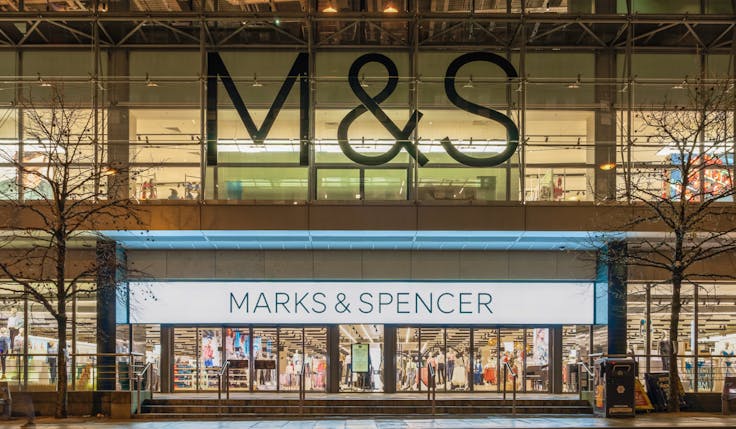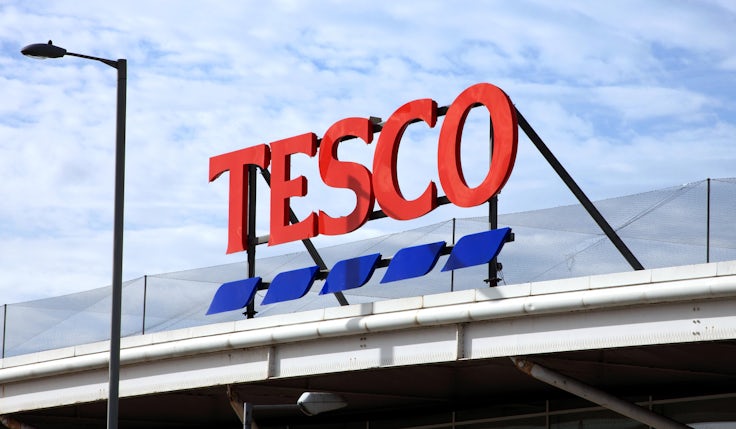M&S welcomes ‘highest ever’ market share for food over Christmas
CEO Stuart Machin also praised the “outstanding performance” delivered by the clothing and home team, which grew its market share to its highest since 2015.

Marks & Spencer saw its highest ever market share for its food department over Christmas, with total sales increasing by 10.2% in the 13 weeks to 31 December.
Despite the strong festive performance, CEO Stuart Machin told media on a call today (12 January) there remains “a lot to do” in the business and that the pace of change is currently “at its greatest”.
The retailer is in the middle of a five-year business transformation plan. Machin claimed the work the retailer has done on improving perceptions around style and value is “resonating with customers”, while there is still work to do on its omnichannel strategy, the supply chain and the store estate.
He praised the “outstanding performance” delivered by the clothing and home team, where sales were up 8.8% year on year in the period. M&S grew its market share in the division to its highest since 2015.
In November, as the retailer launched its ‘Gifts that Give’ festive campaign, the department’s marketing director Anna Braithwaite told Marketing Week that “a great year of learning” and improvements in style perceptions had set it up for a strong Christmas.Why M&S believes a ‘great year of learning’ has set its clothing business up for Christmas
Overall, the group reported sales growth of 9.9% over the period, dropping to 9.7% in the UK alone. With the “strong growth” it delivered in the festive period, M&S has “maintained its momentum” against its wider objectives, Machin said.
Focus on ‘trusted value’
A key pillar of M&S’s transformation strategy has been improving perceptions around its value for money.
“We absolutely are committed to maintain our focus on trusted value,” Machin said, something which continues to be particularly relevant during the cost of living crisis.
The retailer has been investing in price in recent years, and launched its value Remarksable range in 2019. In the half year to November 2022 it added 900 new products to the range as part of a greater investment. Over the festive period sales of the Remarksable range rose by over a quarter (27%) compared to the year prior.
At the opposite end of the spectrum, sales of the top tier Collection range rose by 20% over Christmas, as consumers sought to treat themselves and family as they celebrated the festive period.
Looking forward to 2023, Machin said it’s “difficult to call” whether consumers will pull back on spending in the new year as the cost of living crisis drags on. “It’s clear that uncertainty remains the new norm for us all,” he said.Tesco customers trade down to own brands as Christmas sales jump
He admitted M&S’s customer base is “slightly more insulated up against these headwinds” versus the general population. He also highlighted upcoming events like Valentine’s Day, Easter and Lunar New Year as occasions where the retailer can do well.
He also pointed out the retailer’s “leading position” in more essential product areas such as kidswear, schoolwear and bras, as well as the Remarksable proposition.
“I think customers can trust us every day, and that gives us some confidence for the next quarter,” he said.
M&S’s full-year guidance remains consistent with the figure it set out in November during its half year results.
Omnichannel progress
Machin also highlighted M&S’s omnichannel performance as a highlight of the festive period.
“The performance in the quarter demonstrated the benefits of the action we’re taking to reshape M&S as a leading omnichannel retailer,” he said.
Active app users grew to five million in the quarter, up from four million in the first half and supported by the retailer’s “biggest ever Sparks campaign”.
The strength of the omnichannel proposition is attracting more third party brands to work with the retailer, Machin reported. Ten new third party brands were introduced in the quarter, with sales increasing by around 50%. The business reports that third party brands accounted for 8% of its online clothing sales in the period.
Looking forward, Machin said there’s “a much bigger, longer term opportunity” on third party brands, as the retailer looks to expand its “curated partnerships”.







